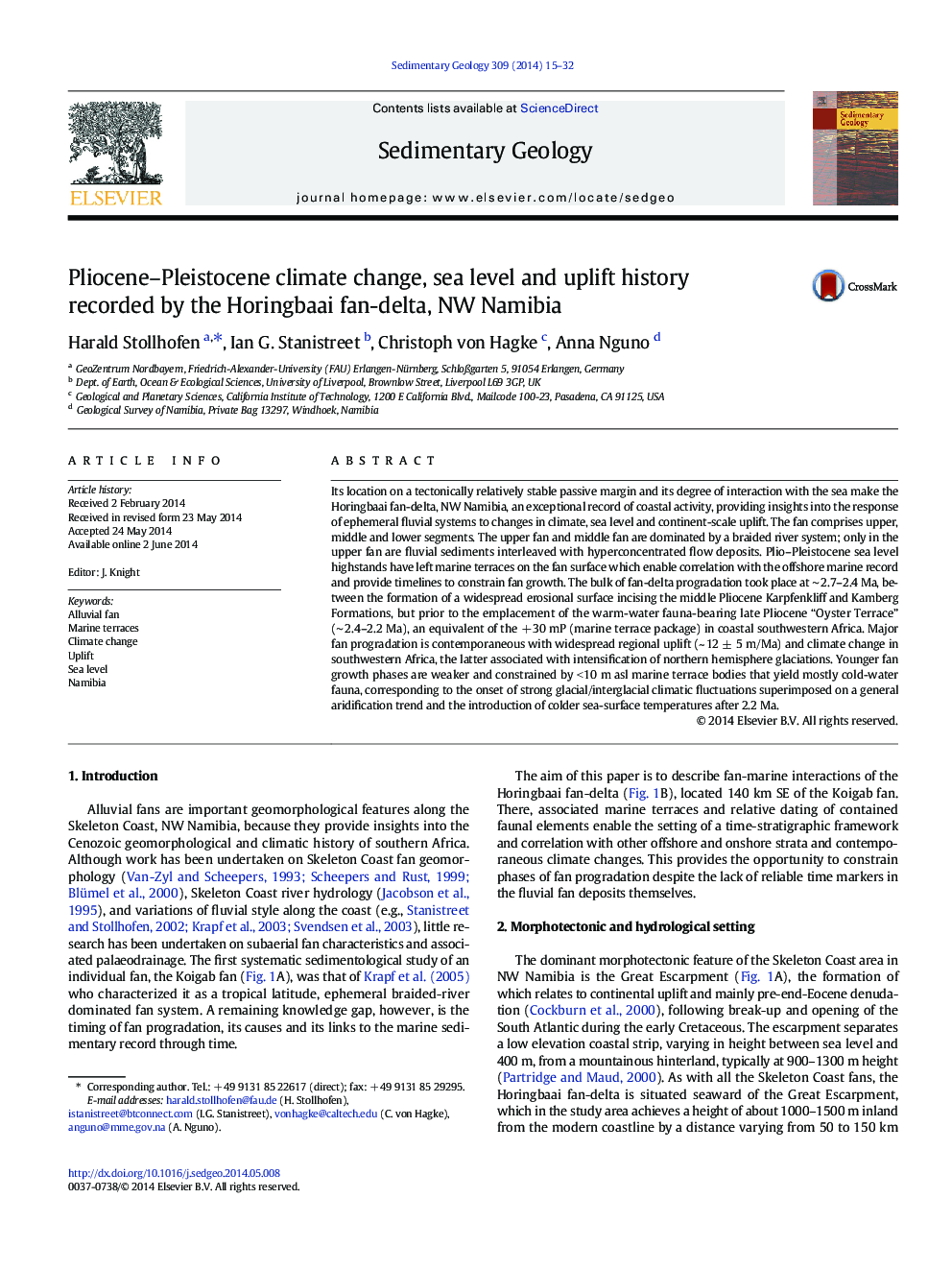| کد مقاله | کد نشریه | سال انتشار | مقاله انگلیسی | نسخه تمام متن |
|---|---|---|---|---|
| 4689392 | 1636054 | 2014 | 18 صفحه PDF | دانلود رایگان |

• Marine suprafan terraces link terrestrial and marine sedimentary records.
• The + 30 marine terrace package (∼ 2.4–2.2 Ma) constrains fan growth.
• Marine terraces register coastal uplift (~ 12 ± 5 m/Ma) since the late Pliocene.
• The bulk of fan progradation took place at ∼ 2.7–2.4 Ma.
• Fan progradation is contemporaneous with uplift, sea level and climate change.
Its location on a tectonically relatively stable passive margin and its degree of interaction with the sea make the Horingbaai fan-delta, NW Namibia, an exceptional record of coastal activity, providing insights into the response of ephemeral fluvial systems to changes in climate, sea level and continent-scale uplift. The fan comprises upper, middle and lower segments. The upper fan and middle fan are dominated by a braided river system; only in the upper fan are fluvial sediments interleaved with hyperconcentrated flow deposits. Plio–Pleistocene sea level highstands have left marine terraces on the fan surface which enable correlation with the offshore marine record and provide timelines to constrain fan growth. The bulk of fan-delta progradation took place at ∼ 2.7–2.4 Ma, between the formation of a widespread erosional surface incising the middle Pliocene Karpfenkliff and Kamberg Formations, but prior to the emplacement of the warm-water fauna-bearing late Pliocene “Oyster Terrace” (∼ 2.4–2.2 Ma), an equivalent of the + 30 mP (marine terrace package) in coastal southwestern Africa. Major fan progradation is contemporaneous with widespread regional uplift (~ 12 ± 5 m/Ma) and climate change in southwestern Africa, the latter associated with intensification of northern hemisphere glaciations. Younger fan growth phases are weaker and constrained by < 10 m asl marine terrace bodies that yield mostly cold-water fauna, corresponding to the onset of strong glacial/interglacial climatic fluctuations superimposed on a general aridification trend and the introduction of colder sea-surface temperatures after 2.2 Ma.
Journal: Sedimentary Geology - Volume 309, 15 July 2014, Pages 15–32